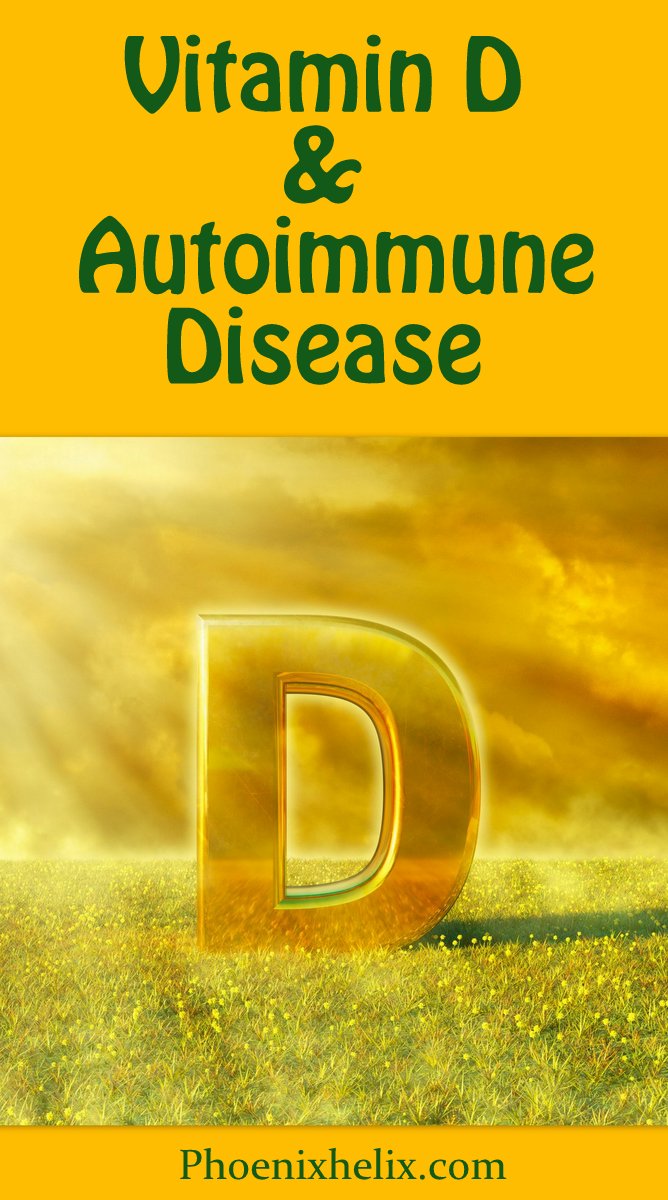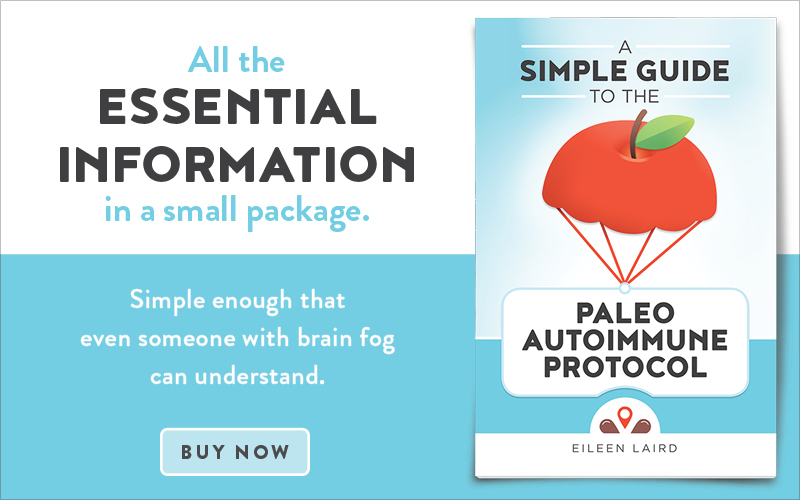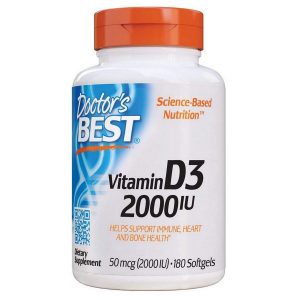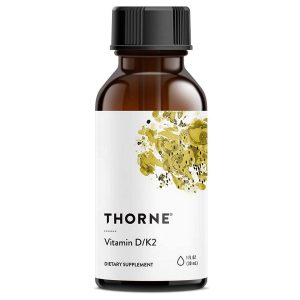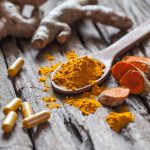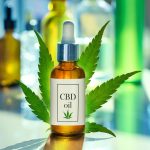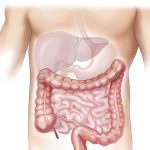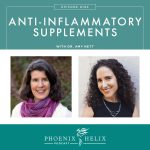
“If I can be somewhere with sunshine and have bare feet and a book, I’m happy.”
~ KT Tunstall
What are the Benefits of Vitamin D for People with Autoimmune Disease?
Vitamin D is essential to immune system regulation. A deficiency in vitamin D increases the risk of developing autoimmune disease and can also increase disease severity. This is why it’s one of the most recommended supplements for people with autoimmune disease.
In addition, vitamin D plays an important role in bone health, and deficiency can cause osteoporosis. People with autoimmune disease are already at risk for osteoporosis, making this vitamin even more important for our health.
But there’s also an interaction between autoimmune symptoms and vitamin D status. Inflammation can use up our stores of vitamin D, and certain medications (like corticosteroids) deplete those stores even further.
Sunshine: Nature’s Supplement
With all of this in mind, it’s clear that we want healthy levels of vitamin D, and supplements are one option. However, our body is designed to get vitamin D through sunshine, and you can’t bottle sunshine. There are benefits that are missed. For example, sunshine also increases seratonin levels which improves mental health, and boosts endorphins which not only improves mood but can also relieve pain. Sunshine regulates our circadian rhythms which improves sleep and supports health on multiple levels. Sunshine also releases nitric oxide which is believed to support cardiovascular health. And then there are the things we can’t measure of name. There’s always a mystery behind the health benefits of nature that can’t be found under a microscope. In fact, when they’ve done research comparing the benefits of sunshine vs. supplements, they found health benefits to sunshine that supplements couldn’t match.
When Is a Bottled Supplement a Better Choice?
While sunshine is the ideal way to get vitamin D, some autoimmune diagnoses involve symptoms or medications that can make sunshine harmful. For example, photosensitivity is a common symptom with lupus, and sunshine can cause an autoimmune flare. Certain medications can cause photosensitivity as well, including methotrexate, a common prescription for rheumatoid arthritis. Heat intolerance is a common symptom for people with multiple sclerosis. These are just a few examples, but if your body reacts negatively to sunshine, a vitamin D supplement is the better choice.
There are also times when sunshine isn’t harmful, but it’s simply difficult for you to get enough vitamin D from the sun. The amount of vitamin D your body creates depends on the season, time of day, geographic location, weather, and the color of your skin. (I share more details in the sunshine section below.) If you discover it’s impractical for you to get vitamin D from the sun, a bottled supplement is the next best thing. However, in those cases, still try to spend some time outdoors because there are benefits beyond vitamin D.
Can You Get Vitamin D Through Food?
Vitamin D is unique because we’re designed to get it through sunshine rather than food, and when conditions are right, sunshine can provide thousands of IU per day. Food, on the other hand, rarely contains vitamin D unless it’s fortified. There is a small list of foods that contain vitamin D naturally that I’ll share in the table below, but you can see by these numbers that it’s hard to get enough vitamin D through food sources alone.
| FOOD (3.5 ounce serving) | VITAMIN D CONTENT |
| Wild Caught Salmon | 600-1000 IU |
| Farmed Salmon | 100-250 IU |
| Canned Salmon | 300-600 IU |
| Canned Sardines | 300 IU |
| Canned Mackerel | 250 IU |
| Canned Tuna | 236 IU |
| Fresh Shiitake Mushrooms | 100 IU |
| Pastured Egg Yolk | 60 IU |
| Conventional Egg Yolk | 20 IU |
How to Get Vitamin D from Sunshine
Unfortunately, it’s not as easy as stepping outside any time of year. Season, geography, cloud cover, time of day, amount of skin exposed, and skin color all influence the amount of vitamin D your skin can produce. Thankfully, there are apps that do the math for you. Dminder is one that’s well reviewed and available for iPhone or Android.
That said, here are some general guidelines:
- If your shadow is shorter than you, that usually means the conditions are right for making vitamin D.
- People with fair skin make vitamin D faster than people with darker skin.
- The more skin you expose, the more vitamin D you will create.
- We create vitamin D more quickly in the summer than in spring and fall. In the winter, it’s often impossible to make vitamin D. Here’s a helpful graphic that shows times of year you can create vitamin D depending on where you live around the world.
- When sunbathing, look for a slight pinkening of the skin (in the research, this is called the erythema dose.) To be clear, this isn’t a sunburn – it’s a signal from your skin that you’ve collected your maximum vitamin D for the day. Once that happens, your body has multiple ways to prevent further vitamin D production. It does this to prevent vitamin D toxicity.
- Remember that while sunshine does offer health benefits, sunburns do not. It’s all about moderation. Skin cancer is connected to sunburns and long-term exposure to the sun. We want to avoid both of those things. Use the dminder app to determine your safe time exposure, and when that time is up, move to the shade or put on some sun clothing or sunscreen. Luminance Skincare sells a natural sunscreen made from just three ingredients, and it’s my personal favorite.
Choosing a High-Quality Supplement
Since Vitamin D is a fat-soluble vitamin, your body stores the excess rather than excreting it. While you can’t get too much vitamin D through sunshine, you CAN get too much through supplementation. It’s called vitamin D toxicity and leads to health harms rather than benefits. For that reason, it’s important to only supplement under the guidance of a healthcare practitioner.
Step one is testing the current level of vitamin D in your body to determine if you are deficient, and if you are, what dose might bring you to a healthy level. Your healthcare practitioner can guide you, but I’ll also share details about testing and optimal levels below.
There are two types of vitamin D supplements: D2 and D3. D3 is the active form of vitamin D, which means it can be immediately used by your body. D2 needs to be converted, and some people have trouble with that conversion. For that reason, it’s best to choose a D3 supplement.
When choosing brands, look for ones that are allergen-free with minimal extra ingredients. Also, looks for brands that use third party testing to confirm purity and potency. Supplement fraud is a problem, and third party testing proves the bottle contains exactly what the label says. One inexpensive brand that meets these requirements is Doctor’s Best. However, some healthcare practitioners recommend combining vitamin D supplementation with vitamin K because they work as a team. If that’s the recommendation of your doctor, Thorne is a trusted brand that sells a combination supplement.
Vitamin D Blood Test: What Is an Optimal Level?
As I mentioned above, it’s important to routinely test your vitamin D levels if you are taking a supplement, in order to prevent toxicity. If you’re getting your vitamin D through sunshine, toxicity isn’t a concern, but you might still want to test your levels to make sure you’re getting enough. It will also let you know if your levels stay high through the winter or if you might benefit from a winter season supplement.
Vitamin D levels can be measured through a simple blood test called 25-Hydroxy Vitamin D.
However, there are different ways to report those levels, and it differs from country to country. Labs in the United States usually use nanograms per milliliter (ng/mL). Many other countries use nanomoles per liter (nmol/L). It’s important to know the measurement used in your results, so that you can interpret them correctly.
US National Institute of Health Lab Test Ranges
- Vitamin D Deficiency = anything under 12 ng/mL (or 30 nmol/L)
- Inadequate levels = 12-20 ng/mL (or 30-50 nmol/L)
- Adequate levels = 20-50 ng/mL (or 50-125 nmol/L)
- Too high with potential harm = anything above 50 ng/mL (or 125 nmol/L)
The ranges above are the ones used in conventional medicine. In functional medicine, practitioners disagree about optimal levels, and recommendations can vary widely. Some recommend 30-40 ng/mL, others 50-70 ng/mL, and others try to get their patients up to 100 ng/mL. Once upon a time, it was believed that higher levels were best, but new research is showing that’s not true. Many practitioners like Chris Kresser have changed their recommendations with emerging research showing that higher levels can have some harmful effects, long before toxicity is reached. I recently interviewed Dr. William Mitchell on my podcast. He’s a naturopath who specializes in rheumatology, and he said he now recommend levels of 30-40 ng/mL for his patients. That’s enough to be sufficient, without risking any harm.
Disclaimer
I hope you found this article helpful. There’s always a disclaimer in place on this website, but when an article discusses medications or supplements, I feel it needs repeating. I am neither a doctor nor a nutritionist, so this article isn’t a substitute for medical advice. I’m simply a woman trying to maximize her own health and sharing what I learn along the way. Always consult with your healthcare team when considering new supplements or treatments.
You May Also Be Interested In
Credit: image at top of page purchased from iStock.

